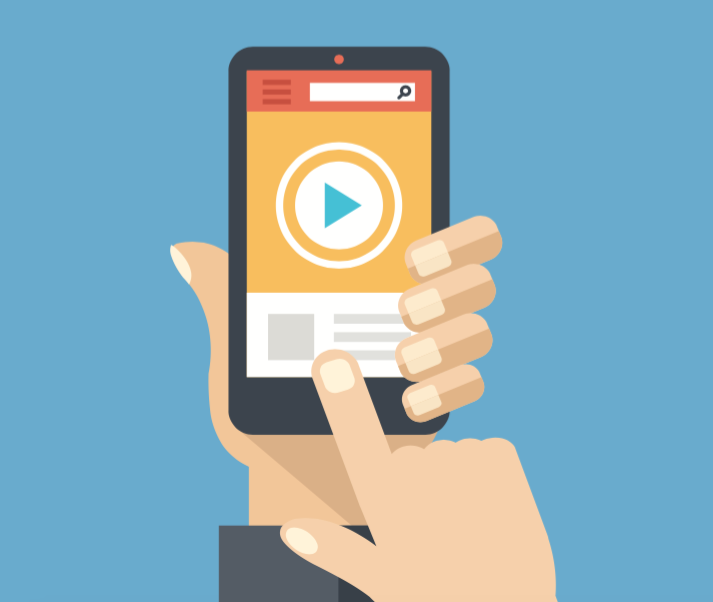
A war is raging for users in the mobile world. Right now, in the digital marketplaces for Apple and Android, users have a choice of 1.5 million and 1.6 million apps, respectively. With such app market saturation, staying relevant is a battle. Accordingly, app designers are continually trying to find new and innovative ways to keep users engaged, re-attract previous users, and market in-app content.
The solution, for a wealth of app businesses, is better mobile marketing.
Mobile marketing is by no means “new,” but it has been so refined in recent years that its toolsets and techniques are growing increasingly effective—and, more important, increasingly seamless.
Methods range from the personalization of app content to in-app messaging to user profile analysis. And, with modern technologies, mobile marketing feels less and less like marketing and more and more like ultra-personalized customer service.
Here are four actual examples of how real businesses are taking mobile marketing to the next level.
Kayak
Kayak and similar companies, provide a holistic push notification experience. From the moment you set a “price alert,” they watch the flights you’re interested in until the exact second that price plummets and then immediately inform you. If you follow through and book it, Kayak will inform you either that it’s on time or that there’s a delay. When you arrive, Kayak will send you a push notification with details about which carousel your luggage is on.
This kind of time-saving convenience creates loyal customers, and it is also uniquely mobile. By investing in mobile architecture ahead of the competition, Kayak has maximized its usefulness to users and established itself as a pioneer in this innovative market
Viggle
Viggle is a company that allows media channels to reward their patrons with “Viggle Points” for buying, renting, and watching their content. Viggle Points, in turn, can be used to purchase more content in the form of movies, shows, and e-books.
Currently, Viggle is employing a gamut of mobile marketing cross-referencing techniques in order to engage current users and resurrect previous ones. Knowing the user is a Game of Thrones fan, Viggle will target an ad at the user during the broadcast of the show. When the user posts something on Facebook in reference to Game of Thrones, Viggle’s ad will appear on the side of the screen, reminding the user that he/she could earn Viggle points for simply watching their favorite show.
That approach has helped Viggle successfully win back nearly 10% of former users.
iBeacon (Apple)
With iBeacon, Apple has radically changed the way your mobile phone communicates with you. iBeacon is a geofencing tool, allowing apps to cross-reference your location with history and predicted desires to ultimately send a precision-strike push notification.
For example, combining the knowledge of your upcoming ski trip with your proximity to Paragon Sports store, a coupon app informs you of a 50% off sale for ski goggles in Paragon Sports happening right now. Or, applying your history of watching folk rock videos on YouTube with the location of your apartment, an event-ticket app notifies you of Mumford and Sons tickets in your neighborhood this weekend.
The Auto Industry
The auto industry as a whole has a strong stake in better mobile marketing. With Bluetooth technology becoming the norm in most cars manufactured today, car brands are using techniques to cross-reference your personal purchasing patterns and search history with your proximity to car dealerships.
Let’s say you’ve been perusing used BMWs online. Three days later, you’re driving by a BMW dealership and an app will tell you that a high-quality used 6-series is awaiting your test drive in that very dealership. Continuing with the model, let’s say you buy that 6-series. Six months down the road, the app will couple your driving habits with your purchasing history and send you an automated coupon for an oil change the next time you pass by that same dealership.
Do You Have a Mobile App Yet?
Despite its obvious utility, mobile marketing is still under adopted. Many businesses, especially SMBs, don’t even have mobile-optimized websites, much less apps. For such businesses to take advantage of the revenue-boosting power of effective mobile marketing, a mobile renaissance will have to take place first.
But it’s not too far-fetched to think that that may happen within the next 10 years. An early preview into the potential of big data and the Internet of Things (IoT), mobile marketing automation innovations may greatly determine the future of marketing as a whole.
As it is, the power of mobile marketing to cater to (or influence) individual users continues to grow and develop. It’s safe to say that mobile marketing will become a significant investment for successful brands in the years to come.
Thank you to the experts at Marketing Profs for this great article. To read more, click here.
